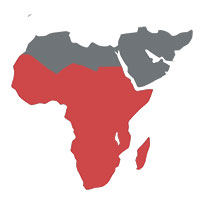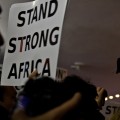Communicating Climate Change
admin | December 2, 2011.
How to communicate climate change? That was the question asked at the Climate Communications Day, a side-event to the UN climate change conference in Durban.
Participants were renowned environmental journalists and they all came to the same conclusion: tell a story.
“One death is a tragedy, a million deaths is a statistic. People are not moved by statistics,” said Yolandi Groenewald. “We as reporters need to pick up the effect is it having on the individual’s life,” Groenewald’s colleague Joydeep Gupta from India added.
Tshepang Wilfred Mfulo from the North Cape Province in South Africa understood. “In 2007, I don’t remember exactly when, unusually strong rainfall occured in our region. 150 homes were flooded and about thirty lives lost. 90 children couldn’t go to school,” the 18-year old recounted.
When he told this story in another of the climate change conference’s sideevents, the room fell silent. Apart from his voice only the sound was from the rain pattering on the roof. The audience were drawn into what Mfulo had to say.
Storytelling works.
Back at the Climate Communications Day, the participating journalists agreed that storytelling works. What they could not agree on is the question on whether they should get actively involved.
For Mfulo, the answer was simple. He chose not only to tell a story, but to act.
“We children are the ones who will be suffering. We are the future generation. We are the future scientists, the future doctors who will have to deal with the effects of climate change. We want our voices as children to be heard,” he said.
With his friends from Girls and Boys Education Movement, a program by the United Nations Children’s Fund (UNICEF), he helped those affected by the 2007 floods. “We tried to do everything in our powers,” he said.
Ever since then Mfulo has done active community work, educating children and youth on climate change.
“We assemble the kids and we talk to them about climate change. If they cannot come to us, we go to them. We tell them what climate change is and we try to show them how it affects them.”
Involving the children is not always easy. To draw their attention to the program, Mfulo and his friends usually show a short film.They tell a story.












comment